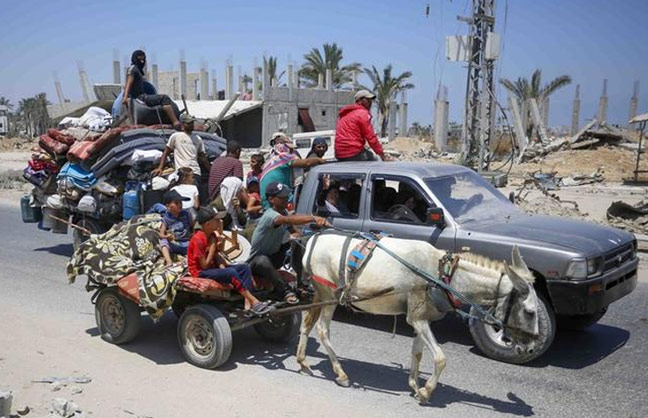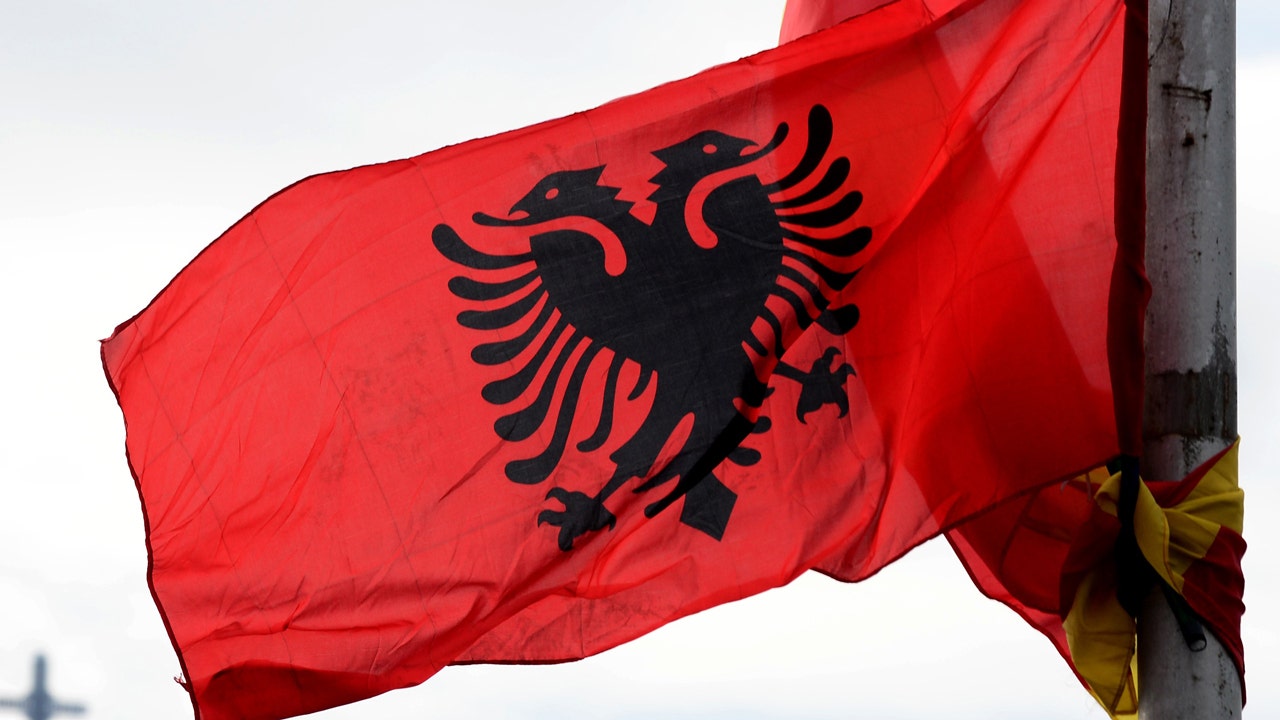CAIRO/GAZA – Israeli tanks re-entered the southern Gaza city of Khan Younis on Friday, triggering mass evacuations as families fled along congested roads. The residents and military reported that Palestinian fighters continued to resist the Israeli troops from the devastated city ruins.
Thousands of residents from eastern Khan Younis scrambled to escape, using any available means of transport—cars, buses, donkey carts, and motorcycle rickshaws—as they navigated the packed roadways. The exodus reflects the deepening crisis as Israel and Lebanon brace for a potential escalation in the ongoing conflict. Meanwhile, leaders from the United States, Egypt, and Qatar are attempting to revive peace efforts, scheduling new talks aimed at halting the fighting in Gaza for August 15.
In recent weeks, Israeli forces, which had swept through nearly the entire Gaza Strip over more than ten months of warfare, have been returning to areas they claimed to have cleared of Hamas fighters. However, they have warned of the possibility that these fighters could regroup. In this latest offensive, the Israeli military distributed leaflets ordering residents and those displaced in eastern Khan Younis, Gaza’s main southern city, to evacuate. This area has already been subjected to multiple waves of intense fighting.
Many families fled to Al-Mawasi, a coastal region that has been designated as a safe zone by Israeli forces. However, fear and uncertainty still gripped the evacuees, as some doubted the safety of even the so-called humanitarian areas. Um Raed Abu Elyan, one of the evacuees, expressed the desperation of her situation, stating, “We are running from the fire, we are running with our children from fear. They said to go to humanitarian areas, but there is no safe place here in Gaza. It is all destroyed and damaged.”
Tragically, later that day, an Israeli airstrike on Al-Mawasi killed six Palestinians. Another strike on a nearby house claimed the lives of four more people, including a young girl, and left several others injured. Among those killed were two local journalists, Tamim Abu Muaamar and Abdallah Al-Susi, along with some of their relatives. Their deaths brought the total number of Palestinian journalists killed by Israeli fire since October 7 to 165, according to the Hamas-run Gaza government’s media office.
The Israeli military reported that its troops targeted numerous Hamas positions in Khan Younis and Rafah, near the Egyptian border. These operations resulted in the seizure of arms depots, the destruction of key infrastructure, and the deaths of dozens of fighters armed with various weapons, including rocket-propelled grenades.
As ceasefire talks loom, scheduled for August 15, the international community remains hopeful for a breakthrough. The talks are set to discuss a potential ceasefire and a deal for the release of hostages. However, previous efforts have largely failed to yield a sustained truce, with only a brief week-long ceasefire achieved last November. While Israel has confirmed that a delegation will participate in the upcoming talks, details remain sparse. A Hamas official stated that the group is “studying” the latest proposal but offered no further insights. The new Hamas leader, Yahya Sinwar, who is believed to be directing the battle from Gaza’s tunnels, has yet to respond.
The conflict’s potential for broader escalation remains a significant concern. Iran has vowed retaliation following the assassination of Hamas leader Ismail Haniyeh in Tehran and the killing of a senior Hezbollah commander in a strike on a Beirut suburb. A Palestinian official involved in the mediation efforts expressed frustration, noting, “If Israel was serious about reaching a ceasefire, they could have simply accepted the proposal Hamas agreed to.”
Israel’s offensive on Gaza began with the aim of eradicating Hamas after the group’s fighters launched an attack on Israeli towns on October 7, resulting in the deaths of 1,200 people and the capture of over 250 hostages, according to Israeli reports. Since then, Israeli strikes have killed nearly 40,000 Palestinians in Gaza, according to health officials in the enclave, with thousands more feared dead beneath the rubble. Israel claims to have eliminated or incapacitated more than 14,000 Hamas fighters, roughly half of the number it estimated at the war’s outset.
Despite the near-total devastation of Gaza, Palestinian fighters continue to mount guerrilla attacks and ambushes, even as Israel prepares for the possibility of a second front on the Lebanese border. The health ministry in Gaza reported that Israeli military strikes in the central and southern regions of the enclave had killed at least 20 Palestinians on Friday alone.





